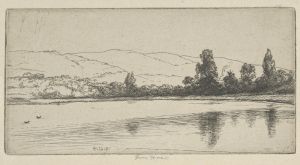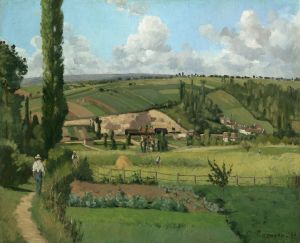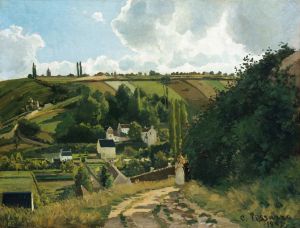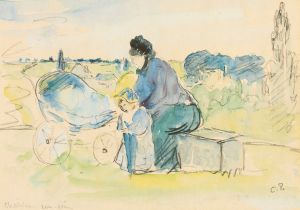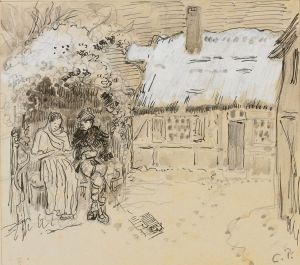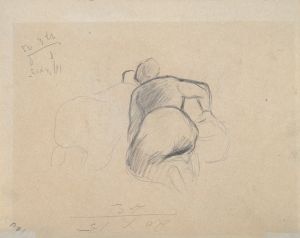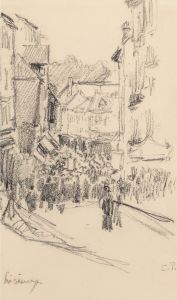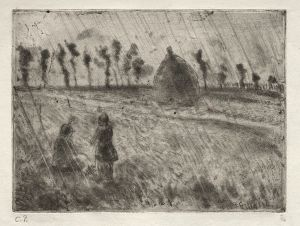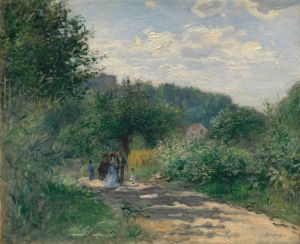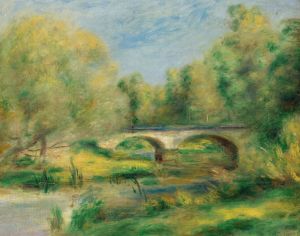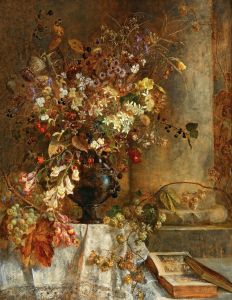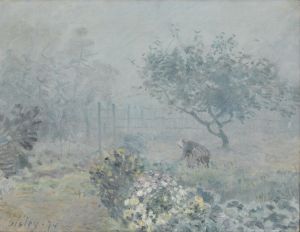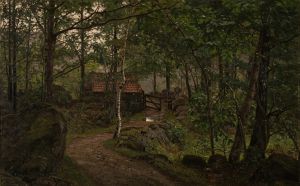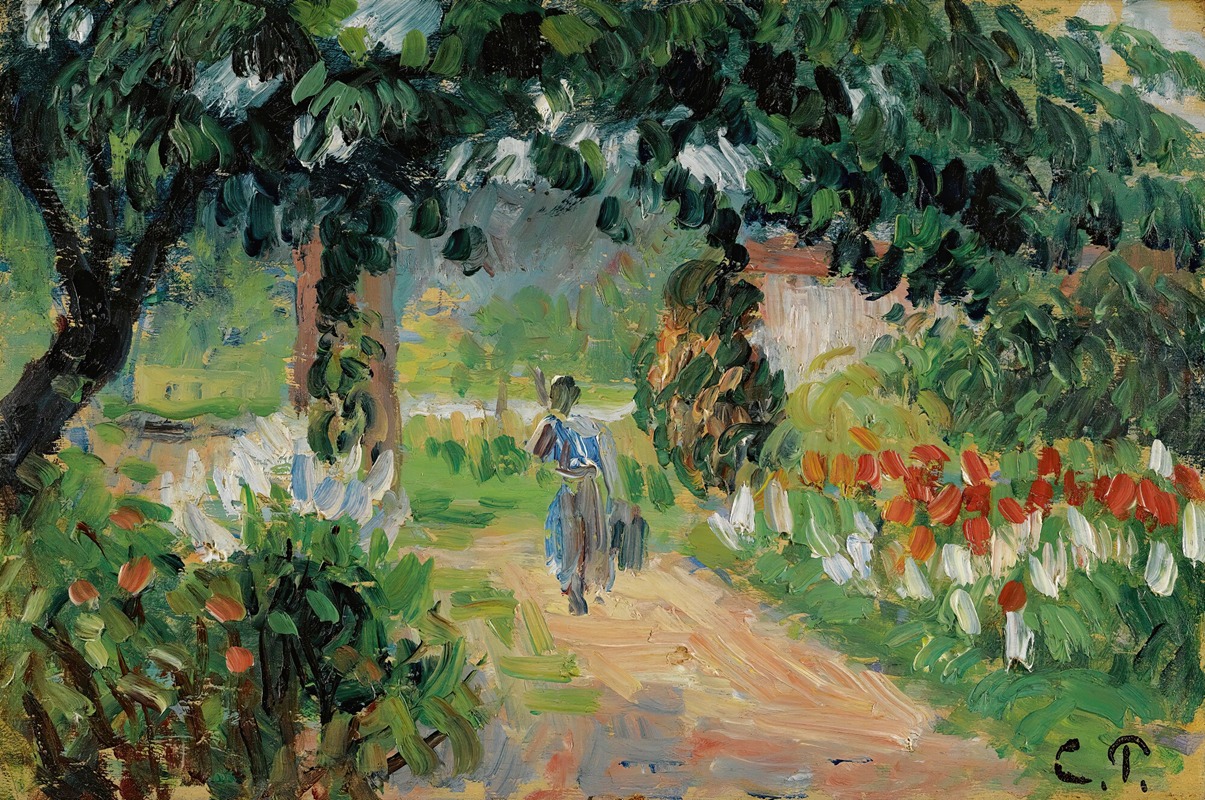
L’allée Du Jardin D’eragny
A hand-painted replica of Camille Pissarro’s masterpiece L’allée Du Jardin D’eragny, meticulously crafted by professional artists to capture the true essence of the original. Each piece is created with museum-quality canvas and rare mineral pigments, carefully painted by experienced artists with delicate brushstrokes and rich, layered colors to perfectly recreate the texture of the original artwork. Unlike machine-printed reproductions, this hand-painted version brings the painting to life, infused with the artist’s emotions and skill in every stroke. Whether for personal collection or home decoration, it instantly elevates the artistic atmosphere of any space.
Camille Pissarro's painting L’allée du Jardin d’Éragny (The Garden Path at Éragny) is a notable work by the French Impressionist and Neo-Impressionist artist. Created in 1890, this painting reflects Pissarro's deep connection to the rural landscapes of France and his interest in capturing the interplay of light, color, and atmosphere.
The artwork depicts a serene garden path in Éragny-sur-Epte, a small village in northern France where Pissarro and his family lived from 1884 until his death in 1903. Éragny became a significant source of inspiration for Pissarro, as its tranquil countryside and natural beauty provided the ideal setting for his exploration of rural life and landscapes. The painting showcases Pissarro's characteristic style, blending Impressionist techniques with a growing interest in the structured approach of Neo-Impressionism.
In L’allée du Jardin d’Éragny, Pissarro employs a harmonious palette of greens, yellows, and earthy tones to depict the lush vegetation and dappled sunlight filtering through the trees. The composition leads the viewer's eye along the garden path, inviting them into the peaceful, intimate setting. The brushwork is loose and fluid, a hallmark of Impressionism, yet there is a subtle sense of order and rhythm in the arrangement of the foliage and the path, reflecting Pissarro's evolving artistic approach during this period.
Pissarro's time in Éragny was marked by both personal contentment and artistic productivity. He purchased a house in the village with financial assistance from Claude Monet, a close friend and fellow Impressionist. The property included a garden, which became a recurring subject in Pissarro's work. His paintings from this period often celebrate the simplicity and beauty of rural life, emphasizing the connection between humans and nature.
L’allée du Jardin d’Éragny is part of Pissarro's broader body of work that documents the changing seasons, light, and atmosphere of the French countryside. The painting exemplifies his ability to convey a sense of place and mood through his mastery of color and composition. Today, this artwork is recognized as an important example of Pissarro's contribution to the Impressionist and Neo-Impressionist movements.
The painting is held in a private collection, and its exact provenance and exhibition history are not widely documented. However, it remains a celebrated piece within Pissarro's oeuvre, reflecting his dedication to capturing the beauty of everyday rural scenes.






